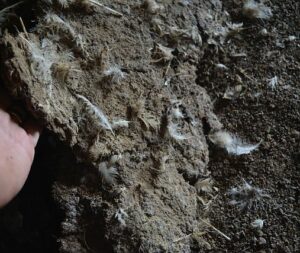Ammonia control is all about how you manage your litter and understanding the dynamics of the complexity of the floor environment. While litter amendments like PLT® reduce pH to effective levels that control ammonia, optimal management begins by better understanding ammonia volatility. In order to do that, we should start by recognizing that litter is a loose term. Over 95% of what birds are standing on today is pure manure, with organic material mixed in that is constantly being broken down. This is a highly enriched environment of microorganisms—billions of bacteria, creating an environment of emitting gases that can have negative effects on birds.
Built-up litter does have helpful properties if managed correctly. The microorganisms in this bedding break down fecal material and uric acid. During this process, they generate ammonia and other noxious gases. It is the accumulation of certain litter components, namely manure, that harms. The amount of manure your previous flock added to the bedding is usually responsible for the majority of ammonia that challenges the next flock.
Consider that when the floor is allowed to cool below 85-80 degrees, most of it goes into a dormancy phase, meaning that none of these microorganisms are replicating or generating. This explains why growers typically don’t detect ammonia during this downtime, but turn to PLT® or other solution at startup after preheat. Growers often then try to control ammonia for the first 10-14 days. The reality is that ammonia is always present as long as the bacteria producing it has the right environment. We cannot eliminate this process, but we can manage it through the way that we manage our litter from flock to flock.
 The more cake formation that occurs, the more ammonia. That’s why a focus on cake formation and identifying the source is key. The source could include:
The more cake formation that occurs, the more ammonia. That’s why a focus on cake formation and identifying the source is key. The source could include:
- ventilation
- waterline management
- bird migration and density
Every gallon of water that stays on the floor potentially leads to another gallon of liquid ammonia that will turn to gas during any heating process, whether the heat is from birds, bedding, or heaters.
How you handle your houses and floors when birds leave is also critical. Whether it’s decaking, tilling, or windrowing, addressing what is left behind can keep the litter components—from manure to helpful microorganisms—in balance. Ammonia may be a fact of a naturally occurring process that is hard to eliminate, but by controlling litter components, we can certainly manage it.
